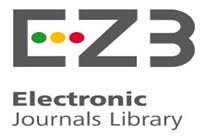IJSEA Archive (Volume 3, Issue 2)
International Journal of Science and Engineering Applications (IJSEA) (Volume 3, Issue 4 - July-Aug 2014)
Cu and Ni Mop up from Spent Lubrication Oil Using Disposed Plastic Materials
Keywords: Spent lubrication oil, adsorbents, heavy metals, thermodynamic parameters, adsorption, Gibbs free energy, activation energy.
Spent lubrication oil from a serviceable, functional motor vehicle was cleaned of Cu and Ni using five different types of waste plastic materials (plastic water bottles, vegetable oil gallons and engine oil gallons) in batch adsorption processes. Atomic Absorption spectral (AAS) analysis of the spent oil before cleaning showed that Copper (Cu) was present at 18.2 mgL-1 and nickel (Ni) at 26.1 mgL-1 levels. After treatment with the waste plastics, final product plastic (FPP), Goshen water plastic (GWP), water-first plastic (WFP), engine oil waste plastic gallon (EOG) and vegetable oil waste plastic gallon (VOG), the engine oil was observed to contain reduced levels of Cu to as low as 2.3, 3.2, 2.7, 2.4 and 2.9 mgL-1 respectively while Ni reduced to 10.6, 11.1, 10.7, 10.1 and 10.3 mgL-1 respectively at equilibrium. The Gibbs free energy of adsorption for the plastic bottles and gallons was determined using standard methods and fell in the range of -0.516 and -4.972kJmol-1, which indicates that the process was exclusively physical adsorption. The modified Arrhenius type equation described the metals adsorption pattern onto the plastic materials.
[1] Para, J. B., Ania, C. O., Arenillas, A., Rubiera, F., Palacios J. M., and Pis, J. J. (2004). Textural Development and Hydrogen Adsorption of Carbon Materials from PET waste. Journal of Alloys and Compounds, 379 (1-2), 280 – 289.
[2] Kabata-Pendias, A., Pendias, H. (1984). Trace Elements in Soils and Plants, CRC Press, Boca Raton.
[3] Train, R.E. (1979) Quality Criteria for Water, Castle House, London.
[4] Bowen, H. J. M. (1979). The Environmental Chemistry of the Elements, Academic Press, London.
[5] Davies, D. J. A., and Bennett, B. G. (1983). Exposure Commitment Assessments of Environmental Pollutants, vol. 3, Monitoring and Assessment Research Centre, London.
[6] Manahan, S.E. (1991). Environmental Chemistry, Lewis, Chelsea, MI, 5th edition.
[7] Murley, L. (1992). Pollution Handbook, National Society for Clean Air and Environmental Protection, Brighton.
[8] Alloway, B. J., Ayres, D.C. (1981). Chemical Principles of Environmental Pollution, Chapman and Hall, Oxford.
[9] Peters, W.C. (1978). Exploration and Mining Geology, Wiley, New York.
[10] O’Neill, P. in: Alloway, B. J. (Ed.), (1990). Heavy Metals in Soils, Blackie and Son, Glasgow.
[11] Griffin R.D. (1988). Principles of Hazardous Materials and Management, Lewis, Ann Arbor.
[12] Davis, M. L and Cornwell, D. A. (1991). Introduction to Environmental Engineering, McGraw-Hill, New York, 2nd edition.
[13] Fergusson, J. E. (1990). The heavy elements: Chemistry, Enviromental impact and Health Effects, Pergamon, Oxford.
[14] Zhan, F. and Itoh, H. (2003). Adsorbents made from Waste Ashes and Post-customer PET and their Potential Utilization in Waste Water Treatment. Journal of Hazardous Materials, 101 (3), 323 – 337.
[15] Kumar, P. S. and Kirthika, K. (2009). Equilibrium and kinetic study of adsorption of nickel from aqueous solution onto bael tree leaf powder. Journal of Engineering Science and Technology, 4 (4), 351 – 361.
[16] Bansal, M., Singh, D., Garg, V. K. and Pawan, R. (2009). Use of Agricultural Waste for the Removal of Ni Ions from Aqueous Solutions: Equilibrium and Kinetic Studies, International Journal of Environmental Science and Engineering, 1 (2), 108 – 114.
[17] Itodo, A.U., Abdulrahman, F.W., Hassan, L.G., Maigandi, S.A., and Itodo, H.U. (2010). Physicochemical parameters of adsorbents from locally sorted H3PO4 & ZnCl2 modified agricultural wastes, New York science journal, 3 (5), 17-24.
[18] Demirbas, E., Kobya, M., Senturk E., and Ozkan, T. (2004). Adsorption kinetics for the removal of chromium (VI) from aqueous solutions on the activated carbons prepared from agricultural wastes, Water SA 30(4), 533-539.
[19] Babel, S., Kurniawen, T. A., Hazrel J., and Mater, B. (2003). Maize Cob and Husk as Adsorbents for the removal of Cd, Pb, and Zn ions from Waste Water, Journal of Soil Science, 42, 403- 409.
[20] Venkatraman, B.R., Parthasarathy, S., Kasthuri, A., Pandia P., and Arivoli, S. (2009). Adsorption of Cr ions by Acid Activated Low-cost Carbon-kinetic, thermodynamic and Equilibrium Studies, E- Journal of Chemistry. 6(S1), S1 –S11.
[21] Radnia, H., Ghoreyshi, A. A., and Younesi, H. (2011). Isotherm and kinetics of Fe (II) adsorption onto chitosan in a batch process, Iranica Journal of Energy & Environment, 2 (3), 250 – 257.
[22] Ali, S.M.W., Ripin A., and Ahmed, A. (2010). Adsorption of Heavy Metals from Recovered Base Oil using Zeolite, Journal of Applied Sciences, 10 (21), 2688-2692.
[23] Kukwa, D.T., Ikyereve R.E., and Agbo, E.O. (2014). Removal of Cr and Pb from spent Engine Oil using Waste Plastic materials as Adsorbent, International Journal of Scientific and Engineering Research, 5 (5), 1162-1169.
[24] Malik, R., Ramteke, D.S., Wate, S.R. (2006). Physicochemical and surface characterization of adsorbent prepared from groundnut shell by ZnCl2 activation and its ability to adsorb colour, Indian journal of chemical Technology, 13, 319-328.
[25] Toles, C.A., Marshall, W. E., Johns, M. M., Wartelle I. A. and McAloon, A. (2000). Acid Activated Carbons from Almond Shells; Physical, Chemical and Adsorptive Properties and Estimated Cost of Production, Bioresource Technology, 71, 87- 92.
[26] Kandah, M.I., Allawzi M.A. and Allabonn, H. (2008). Improvement of Manure Adsorption Capacity for Co Removal by Chemical Treatment with Citric Acids, Jordan Journal of Civil Engineering, 2 (4), 344 – 354.
[27] Jabar, J.M., Mojibola A.A. and Adetuyi, A.O. (2011). Adsorption Thermodynamic Studies of Indigo Adsorption on Some Activated Bio-solids from Dyeing Effluent, Conference Proceedings of the 34th Annual International Conference of Chemical Society of Nigeria.
[28] Smith, J.M., Van Ness, H.C.,and Abbott, M.M. (2005). Introduction to Chemival Engineering Thermodynamics, 7th ed. McGraw Hill, New York 492-497
[29] Micheal, H. and Agebaemi, I.S. (2005). Effects of Temperature on the Sorption of Pb2+ and Cd2+ from Aqueous Solution by Caladium bicolor (wild cocoyam) biomass, Electronic Journal of Biotechnology, 8 (2), 163-169.
[30] Chaudhari, A. and Lee, S.L. (2008). Effect of sticking probability on monomer-dimer reaction, Bulletin of the Catalysis Society of India, 7, 90-95.
@article{Kukwa03041005,
title = " Cu and Ni Mop up from Spent Lubrication Oil Using Disposed Plastic Materials ",
journal = "International Journal of Science and Engineering Applications (IJSEA)",
volume = "3",
number = "4",
pages = "87 - 93",
year = "2014",
author = " D. T. Kukwa,R. E. Ikyereve,E.O. Agbo ",
}










